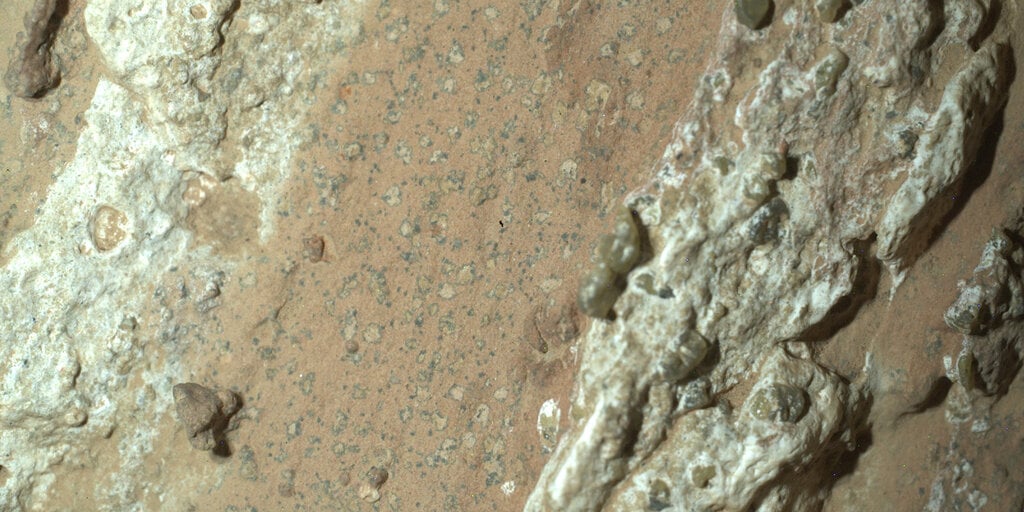Did life once exist on Mars? The question has stumped scientists and theorists for generations. Now, the National Aeronautics and Space Administration (NASA) may have discovered signs of microbial life that could have existed on the red planet.
On July 21, the NASA Perseverance Rover discovered a rock in the Jezero Crater on Mars that scientists named “Cheyava Falls.” What makes the rock unique, NASA said, is that it is covered with patterns that resemble leopard spots, which indicates a possible and ancient chemical reaction.
“So we think that we have here in this rock is what we are calling a potential biosignature,” Perseverance Deputy Project Scientist Kathryn Stack Morgan told Decrypt. “We’re defining that as features that could have a biological origin, but that needs further study or more data to confirm the presence or absence of life”—adding the Cheyava Falls rock does contain organic molecules.
As Stack Morgan explained, on Earth, life is often associated with and takes advantage of chemical reactions as an energy source—a process that may have played out on Mars.
”We have a rock that was, we believe, formed in an environment that was habitable, suitable for life,” she said.
“So all of these things together—combined with a very intriguing, just textural shape and look—is contributing to our excitement about these features as a potential biosignature,” Stack Morgan added.
According to NASA, the Perseverance rover conducted multiple scans of the Cheyava Falls rock and found that it contains organic compounds that are considered the building blocks of life. Still, NASA said this is not always the case. While the possibility of finding signs of life is exciting, Stack Morgan said NASA is cautious about saying that it is a definite sign of life on Mars.
“It’s a potential,” she said. “The features that we see in the rock, and the organic molecules that we find in the rock, these things can all form in other ways that don’t require the presence of life.”
While the Preservance rover was able to send back a lot of detail on the Cheyava Falls rock, there is only so much NASA can learn through the rover’s instruments.
“We have thrown all of our instruments at this target and have gotten to the end of what we can say about this rock with the rover,” Stack Morgan said. “So this is exactly the kind of rock that we would want to bring back to Earth to study here in labs on Earth to make a statement in a more definitive conclusion about whether life was present in this rock at one point.”
As Stack Morgan explained, Perseverance’s role is only to gather samples on Mars; retrieving the samples would be a part of a future multi-mission plan that NASA would undertake with the European Space Agency.
Getting the samples back to Earth, however, is easier said than done. Still, human-led deep space exploration is decades away, with private companies like SpaceX, Virgin Galactic, Blue Origin, and Boeing vying to open space up to private businesses and establish a foothold on the Moon and then Mars.
Earlier this month, SpaceX CEO Elon Musk detailed how SpaceX would get to and establish a colony on Mars, including using his own “DNA” to birth colonists, according to a report by the New York Times.
Edited by Ryan Ozawa.

